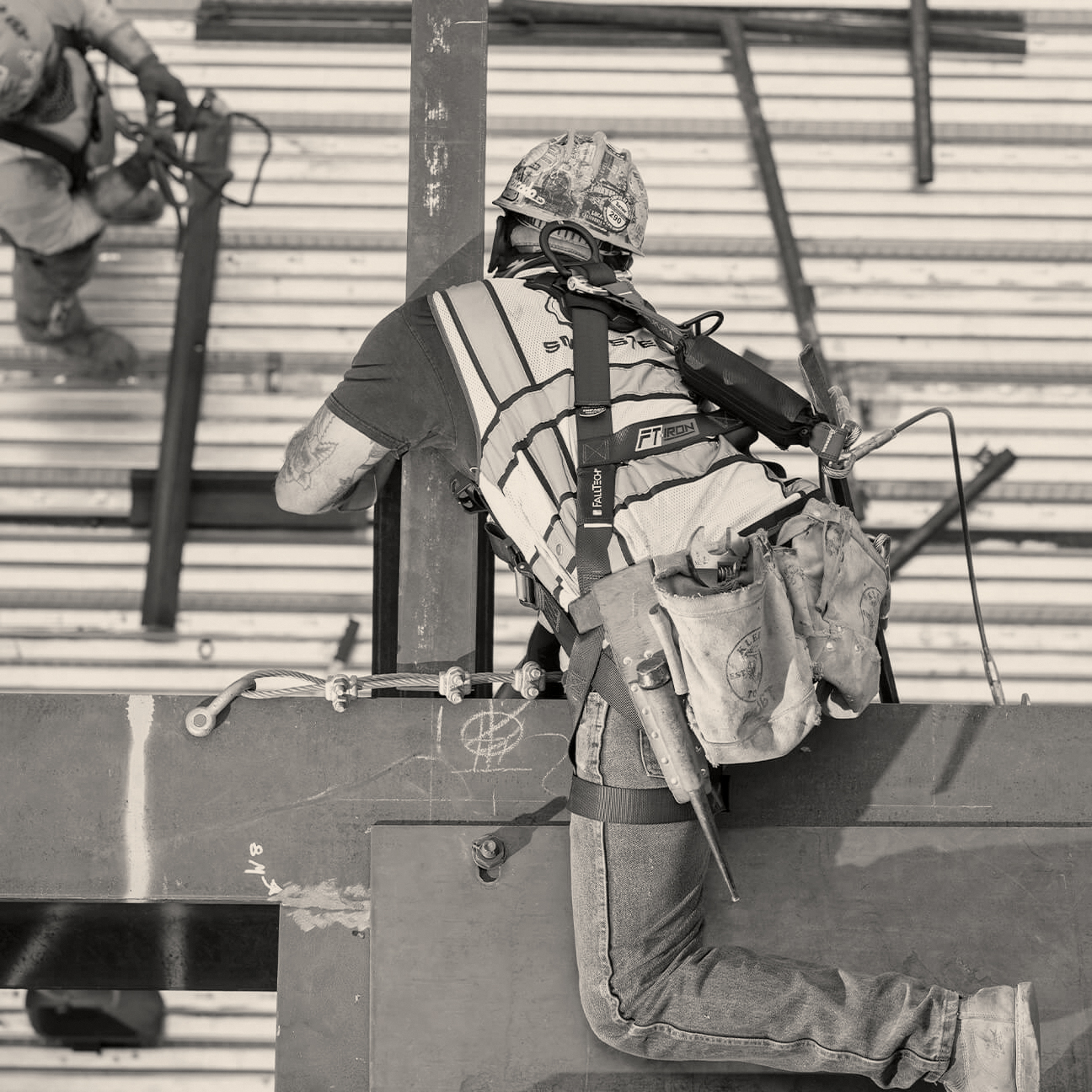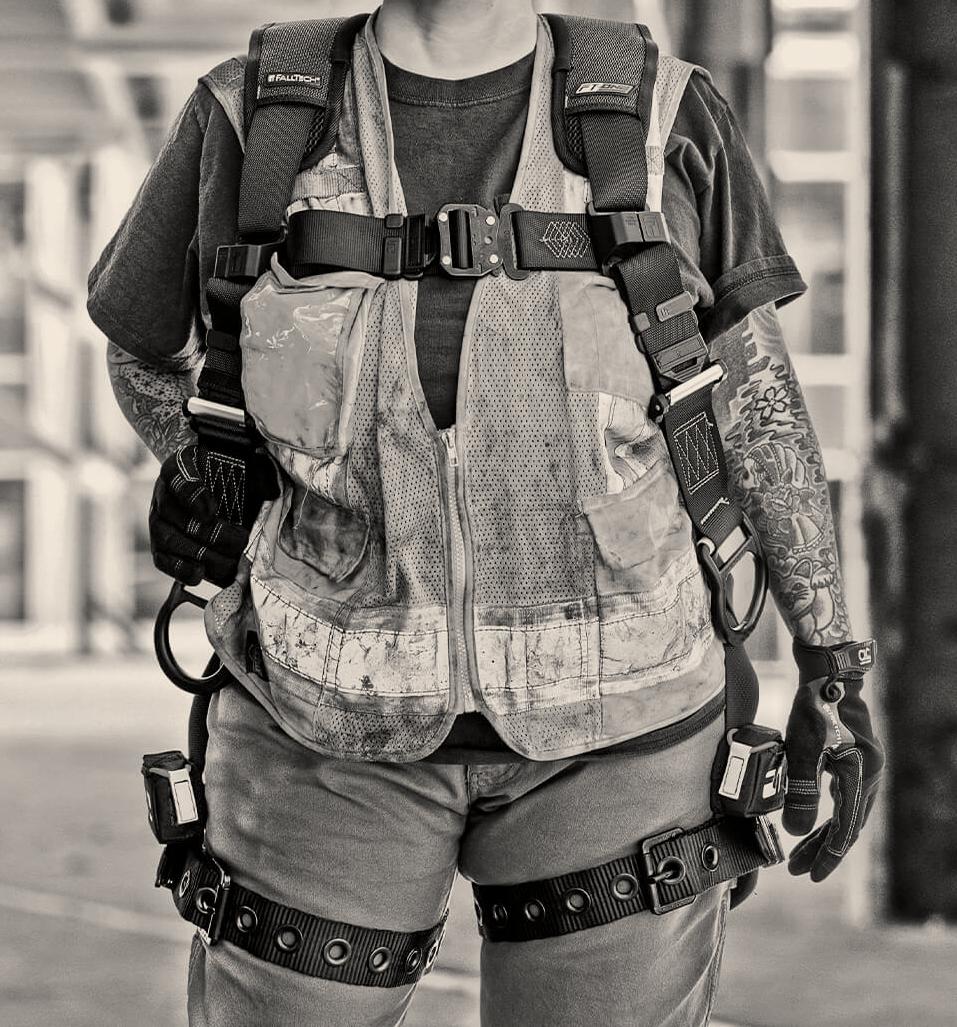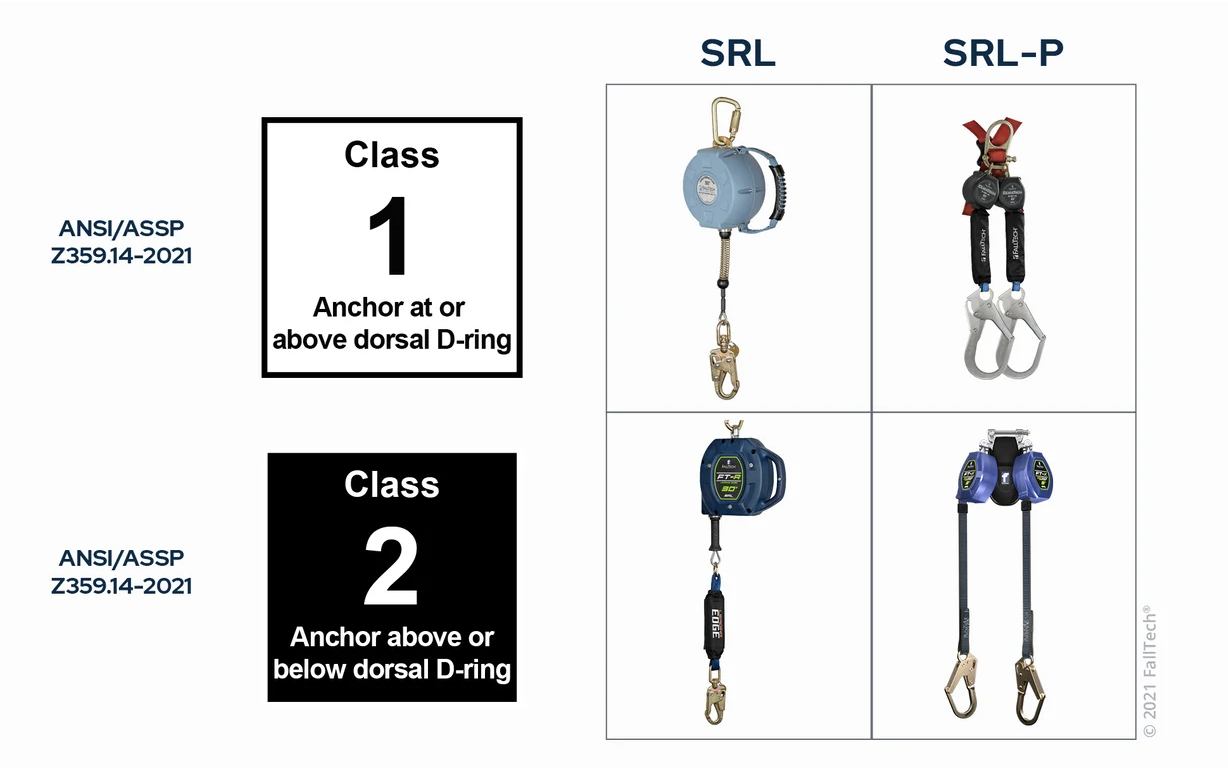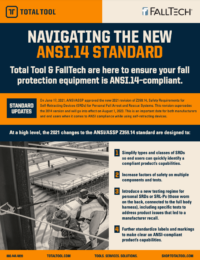ANSI.14 Update
Published: March 10, 2023

The new ANSI.14 Standard went into effect August 1, 2023. Are you ready?
Total Tool is partnering with FallTech to get you up-to-date on the new ANSI fall protection standard.
Read on for how it will impact safety regulations, self-retracting devices (SRDs), and testing regimes going forward.
Ready to update your equipment?
All ANSI.14 information included on this page originates from FallTech. Total Tool makes no claims of ownership of any graphics, copy, videos, or resources used in this page.
Read The Summary
On June 17, 2021, ANSI/ASSP approved the new 2021 revision of Z359.14, Safety Requirements for Self-Retracting Devices (SRDs) for Personal Fall Arrest and Rescue Systems. This revision supersedes the 2014 version and went into effect on August 1, 2023. This is an important date for both manufacturers and end users when it comes to ANSI compliance while using self-retracting devices.
At a high level, this new standard is designed to:
- Simplify types and classes of SRDs
- Increase factors of safety
- Introduce a new testing regime for personal SRDs or SRL-Ps
- Further standardize labels and markings

Watch The Videos
These Falltech Videos explain how the NEW ANSI.14 STANDARD will impact your jobsite.
Review FAQS
In the previous 2014 revision of Z359.14, SRDs were organized by type (SRL, SRL-R for devices with rescue/retrieval functions, or SRL-LE for leading edge capability) and class (Class A or Class B). The intent was to organize SRDs by features in “Type” and then by their overhead performance capability by “Class.”
Both types and classes were overhauled in 2021: “types” are SRL, SRL-P for personal devices meant to be installed on the user’s full body harness, or SRL-R for devices with rescue/retrieval functions, and “classes” are Class 1 or Class 2. The SRD class is now applied to acceptable anchorage locations. Class 1 devices are suitable for at or above dorsal D-ring anchorage locations. Class 2 devices are suitable for above, at, or up to 5 feet below the dorsal D-ring anchorage locations AND must be leading edge rated. So, if your jobsite has edge exposures and you need a leading edge SRL or SRL-LE, you will be looking for a Class 2 device in compliance with ANSI/ASSP Z359.14-2021!
With the type and class changes, Z359.14-2021 also introduced standard overhead performance criteria for all SRDs and standardized class labeling. Now, a worker will be able to quickly identify the suitable device for the hazards faced in their work zone.
In the 2012 and 2014 revisions of Z359.14, overhead performance criteria were defined by SRD class: Class A or Class B. In 2021, overhead performance will be standardized across all SRDs. The performance requirements are summarized in the table below:
| Old ANSI Z359.14-2014 | New ANSI Z359.14-2021 | ||
|---|---|---|---|
| SRD Class | Class A | Class B | Class 1 & Class 2 |
| Maximum Arrest Force | 1,800 lb | 1,800 lb | |
| Average Arrest Force | 1,350 lb* | 900 lb* | 1,350 lb* |
| Arrest Distance | 24 inches | 54 inches | 42 inches |
*Note: During hot, cold, and wet conditioned tests, average arrest force limit is increased.
All ANSI/ASSP Z359.14-2021 compliant SRDs will have one of the markings below consistent with its class:

In addition to the Class 1 and Class 2 standard labels, all Class 2 SRLs must include a full fall clearance table or diagram as part of the physical product and the user instruction manual. This provides critical clearance information directly on the product, where it is most easily accessible by the end user or Competent Person at the place and time of use.
The 2021 version of Z359.14 significantly expands the volume and severity of testing required to comply with the standard. Most of these changes are intended to improve safety factors and address specific known hazards or applications of SRDs. While testing the products mainly affects manufacturers and test labs, it’s essential to understand how these changes may impact how these devices are deployed and used in the field by end users. Some of the significant changes include:
- When tested in overhead anchorage applications, performance criteria have changed for all compliant SRDs.
- Requirements for hot, cold, and wet-conditioned testing are the same, but the number of tests is increased.
- The test mass for all dynamic drop tests has increased to 310 lbs. from the previous 282 lbs. The test mass is now equal to the ANSI maximum allowable fully loaded user capacity, including clothes, tools, and gear.
- Static strength testing load was increased to 3,600 lbs. from 3,000 lbs. All compliant SRDs will now have a 2:1 safety factor.
- A new static test to ensure the locking mechanism on SRDs that do not use an internal brake can withstand a minimum load of 1,800 lbs.
- New dynamic test to ensure that SRDs with an internal brake have sufficient reserve lifeline in the event of a fall when the SRD’s line constituent is fully paid out or deployed.
- SRL-P’s have several new, specific tests:
- 6-foot free fall dynamic performance test.
- Twin or dual-leg devices will be dynamically tested with both leg-end connectors attached to ensure proper deployment of energy absorbers and provide warning if arrest forces may exceed 1,800 lbs.
- Tie-back or Wrap-back SRL-Ps have additional static testing to validate the strength of the tie-back section when secured around an anchorage
- Custom connectors for SRL-Ps have additional testing requirements
- Finally, the ANSI Z359.14-2021 standard has introduced more static testing, more dynamic testing, more application-specific testing, more application-relevant testing, and increased safety factors to improve the quality of SRDs in the fall protection market to save lives.
ANSI/ASSP Z359.14-2021 goes into effect on August 1, 2023. For organizations or job sites that mandate ANSI compliance, all SRDs must be manufactured and marked as compliant with Z359.14-2021. Any SRDs marked as compliant with Z359.14-2014 or any previous revision will be considered out of compliance after August 1, 2023. FallTech recommends reaching out to your manufacturer to inquire how this standard change affects the SRDs that you are using now and plan your transition to 2021 compliant devices.
Total Tool has set aside a specific area of our Total Access online store to highlight what equipment we carry that comply with these guidelines. Click below or reach out to your sales rep to learn more.
Explore Compliant EquipmentYes. Total Tool has now added ANSI.14 compliant equipment to our rental inventory. You can explore our rental catalog at the link below.
Explore Equipment to RentSave This Information
For more details and information on the new ANSI fall protection standard, read or download our informational brochure today.

ANSI.14 Informational Brochure
View / DownloadShop compliant Equipment
If you are ready to explore what options are available, click below to find products that meet the ANSI. 14 Standard.